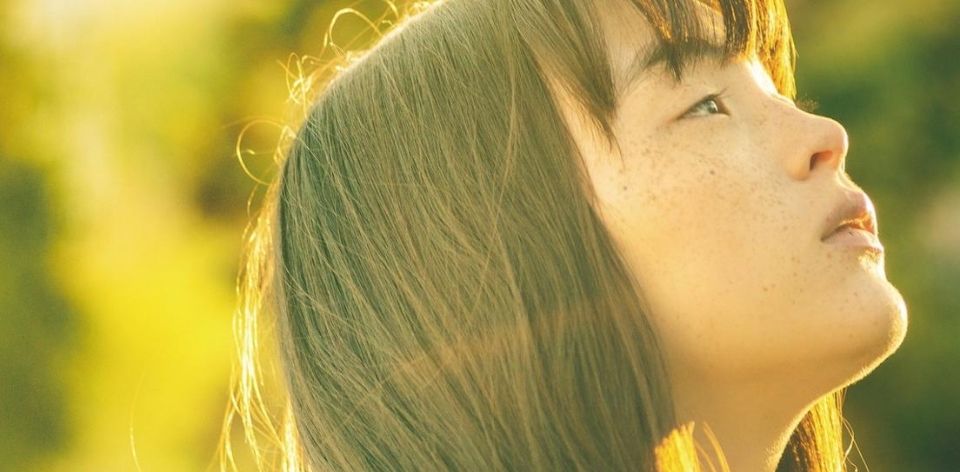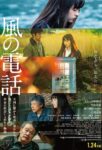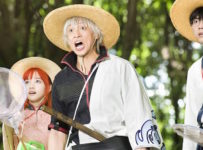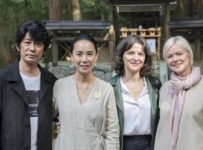There’s a disconnected phone booth in Japan’s Otsuchi, the small town where 2,000 citizens lost their lives in the 2011 earthquake and tsunami. It is said that speaking into the receiver will carry messages to deceased loved ones. Over 30,000 people have visited the site to date.
VOICES IN THE WIND, or Wind’s Telephone (風の電話) as its more accurately known in Japan, is inspired by this modern cultural touch-point. Yet rather than simply focusing on the booth itself, which is actually introduced much later in the film, writers Kyoko Inukai and director Nobuhiro Suwa focus on a young girl as she comes to terms with her own grief.
Now on the edge of seventeen and living with her aunt in Hiroshima, Haru (Serena Motola) lost her parents and brother almost a decade earlier in the 3.11 disaster. When her aunt falls ill, she takes the initiative to travel across the country to her birthplace.
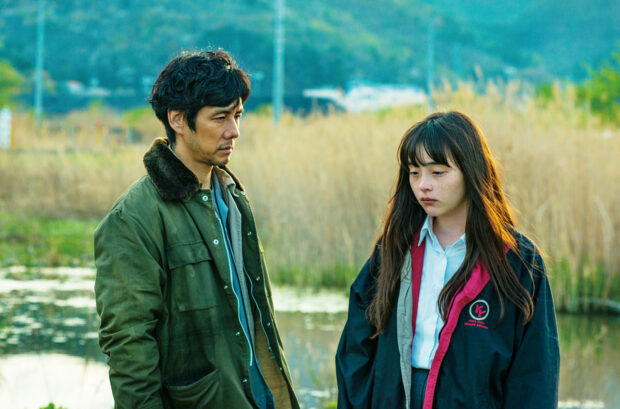
Throughout the course of Haru’s coming-of-age road trip, she encounters people who have different ways of dealing with the lingering effects of the tragedy. With a handful of exceptions, the majority of encounters are with genuinely nice people. There’s a displaced Kurdish family, for example, who talk of their own grief and longing for a home that doesn’t exist anymore. They also welcome Serena like family.
Compared with the fairly beige Fukushima 50, it’s also good to see a film that questions some of the decisions authorities have made. This is mostly in the form of a conversation with a character played by the legendary Toshiyuki Nishida, who speaks directly to the discrimination locals face, Tepco’s silence and complicity and the personal guilt survivors feel. Indeed, the initial setting of Hiroshima obviously conjures up parallels with the bombing, something referred to several times throughout the film.
The rebuilding efforts and ongoing eerie devastation still lingers, beautifully captured by director Nobuhiro Suwa. Contrasted with the yellow fields of the surrounding areas, the film visually answers the question of why people are drawn to return to the area and “live in the place where they were born.”
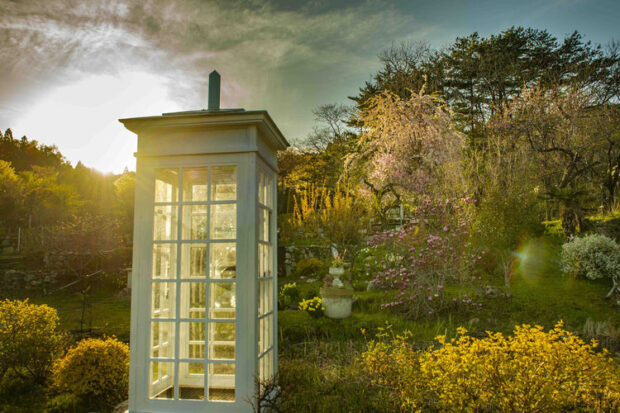
Relative newcomer Motola (21st Century Girl) delivers a remarkably nuanced performance that is sure to put her on the top of casting lists. There’s two excellent emotional scenes of her facing her own guilt while visiting the mother of a deceased friend, and another when we get to the phone itself. Yet it’s the powerhouse anguished scream of ‘why?’ into an abandoned field that will leave few eyes dry.
Which gets to the heart of this film’s journey: the acceptance of 3.11 as both a name and place that will define an unspeakable tragedy for an entire generation. “Because I’m alive,” Serena laments, “I remember you all.” In a year of some excellent films on the long-lasting impact of the Tōhoku earthquake and tsunami, including the fatalistic It Feels So Good, this rumination on grief is one of the most emotional impact.
2020 | Japan | DIRECTOR: Nobuhiro Suwa| WRITER: Kyoko Inukai, Nobuhiro Suwa | CAST: Serena Motola, Hidetoshi Nishijima, Toshiyuki Nishida, Tomokazu Miura | DISTRIBUTOR: JAPAN CUTS (US), Broadmedia Studios (JPN) | RUNNING TIME: 139 minutes | RELEASE DATE: 17-30 July 2020 (JAPAN CUTS)

